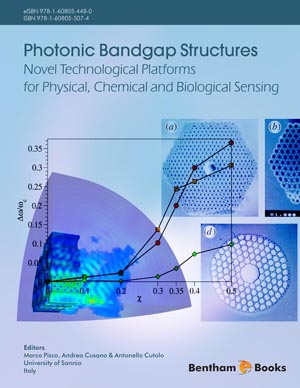Abstract
Photonic crystal sensors have recently drawn much attention due to their inherent compactness and high sensitivity. Different types of photonic crystal sensors rely on one main transduction mechanism: perturbations in environmental conditions alter index of refraction or periodicity of the structure which is transferred to a detectable change in optical power or spectrum. This transduction mechanism facilitates utilization of photonic crystal for sensor applications ranging from pressure and displacement measurements to detection of chemical composition change and binding events. In this chapter, we give a summary of different types of photonic crystal sensors such as waveguides, microcavities and self-assembled 3D structures and review their application to physical, chemical and biological sensing. We discuss advantages and limitations of the technology.
Keywords: Optical sensing, photonic crystals, compact sensors.





















